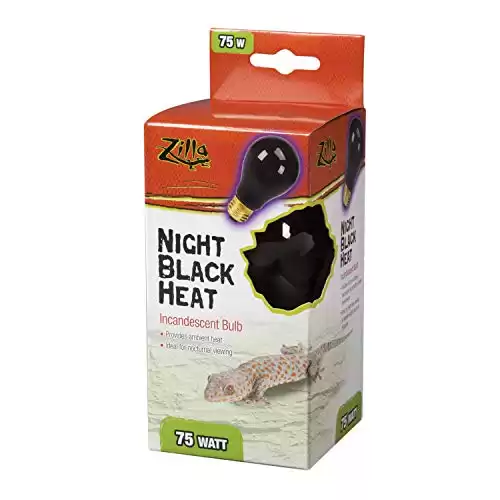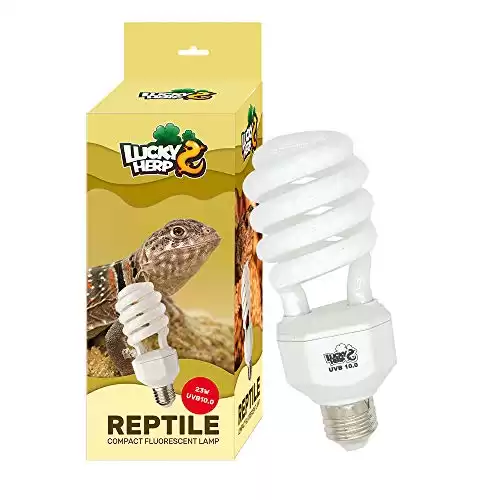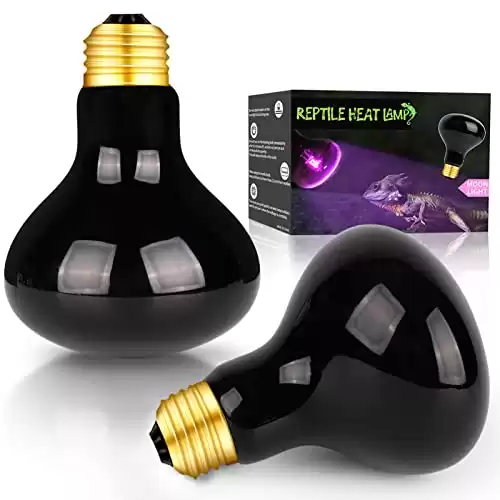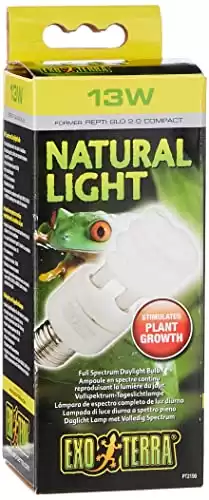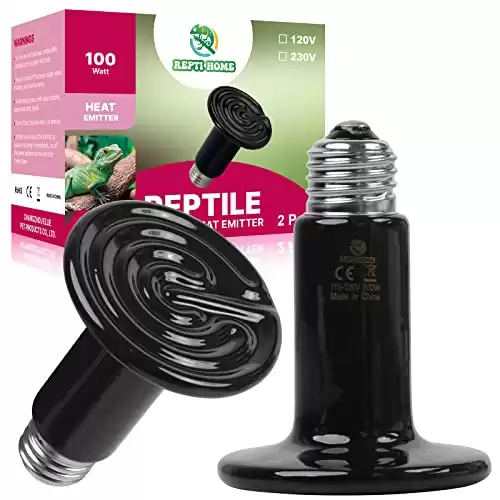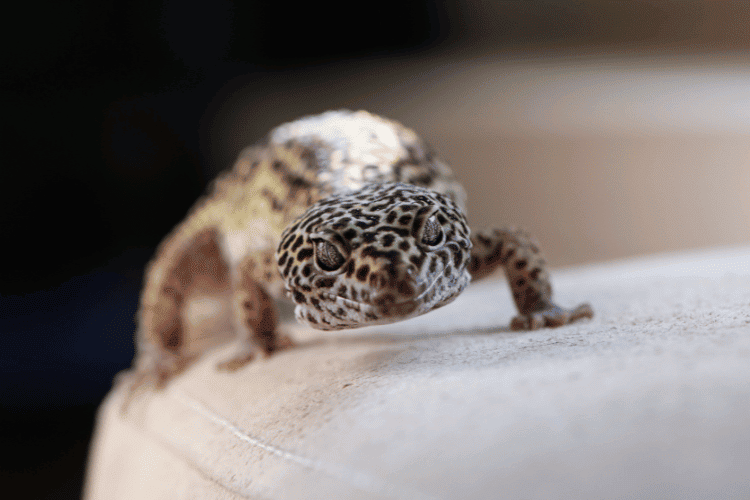
Selecting the appropriate watt bulb for your leopard gecko’s 20-gallon tank is a crucial step in providing the optimal lighting and temperature conditions for its well-being.
To help you decide what watt bulb for leopard gecko 20-gallon tank setups works best, we’ve compiled a comprehensive guide that takes you through the essential factors to consider.
Why Do Leopard Geckos Need Light?
Leopard geckos, despite being nocturnal creatures, still benefit from light in their habitat for several reasons:
Temperature Regulation
Bright light sources, particularly heat bulbs, help create temperature gradients within the gecko tank. These gradients allow geckos to move between warmer and cooler areas to regulate their body temperature, which is vital for their metabolic processes.
Natural Behavior
Even though they are primarily active during the night, leopard geckos still have natural behaviors such as basking, exploring, and interacting. Proper lighting enables them to engage in these behaviors, contributing to their mental and physical well-being.
Circadian Rhythms
While leopard geckos don’t rely on light for their internal clocks as diurnal species do, a consistent light-dark cycle can help regulate their biological rhythms and provide a sense of normalcy in their environment.
Reproduction
In some cases, providing a light cycle can help stimulate breeding behaviors in leopard geckos by mimicking seasonal changes in daylight duration.
Natural Enrichment
Appropriate lighting can simulate the natural world, providing visual stimulation and enhancing your gecko’s overall quality of life.
What Are the Best Light Bulb for Geckos?
When considering the best types of light bulbs for leopard geckos, it’s important to address their specific needs, including heat, UVB exposure, and natural behavior.
- Good for observing nighttime behaviors without disturbing natural rhythms
- Good for ensuring proper temperature gradients for thermoregulation
Here are the recommended types of bulbs and the reasons behind their suitability:
Incandescent Heat Bulbs
Leopard geckos require a temperature gradient to regulate their body temperature, and incandescent heat bulbs play a key role in providing this gradient. They mimic the natural warmth geckos would experience while basking in their native habitat.
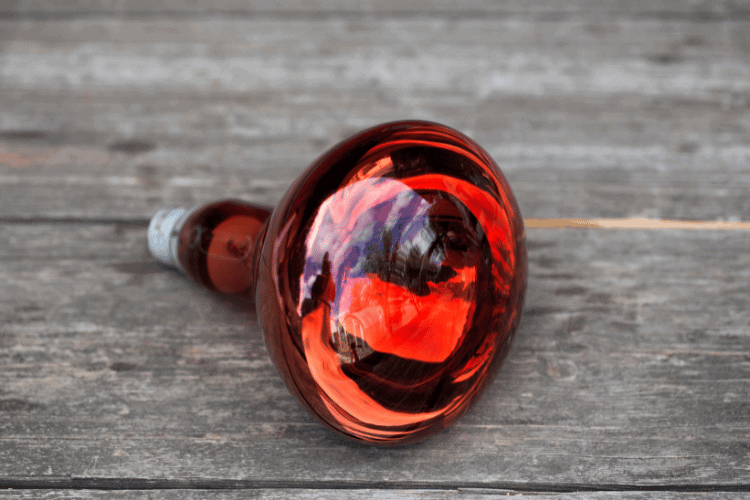
Low-Output UVB Bulbs
While leopard geckos are nocturnal and don’t require high levels of UVB exposure like diurnal reptiles, some research suggests that controlled, low levels of UVB might be beneficial for their
Low-output UVB bulbs, such as compact or linear UVB fluorescents, can provide a subtle amount of UVB without overexposing the gecko to harmful UV radiation.
Combining UVB lighting with non-light heater lamps, such as ceramic heaters, ensures the right temperature without interfering with the natural light cycle.
LED or Moonlight Bulbs
To replicate the natural lunar cycle and provide a dim nighttime light, LED or moonlight bulbs can be used. These bulbs emit a soft blue or white light that allows you to observe your gecko’s nighttime behaviors without disturbing its natural rhythms.
Full-Spectrum Lighting
While not essential, some keepers opt for full-spectrum lighting to mimic natural daylight. These bulbs offer a broader spectrum of light that may contribute to the gecko’s overall well-being and visual enrichment.
Ceramic Heat Bulbs
Ceramic heat emitter (CHE) bulbs, also known as ceramic heat bulbs, are a beneficial heating choice for leopard geckos.
They emit radiant heat, mimicking natural warming surfaces, and provide a consistent, safe heat source. They distribute heat evenly, ensuring proper temperature gradients for thermoregulation.
While CHEs don’t emit UVB, they can be combined with other lighting options to meet the gecko’s lighting needs.
Factors to Consider When Choosing Wattage for a 20-Gallon Tank
The wattage of the bulb you should use for a leopard gecko’s 20-gallon tank depends on a few factors, including the ambient temperature of the room and the specific heating needs of your gecko.
Basking Spot
Leopard geckos require a basking spot where they can comfortably raise their body temperature. The wattage you choose should be able to create the desired basking temperature, typically around 88 to 90°F (31 to 32°C).
Temperature Gradient
A proper temperature gradient is essential within the leopard gecko tank. This means having warmer and cooler areas. The wattage you select should contribute to achieving this temperature range.
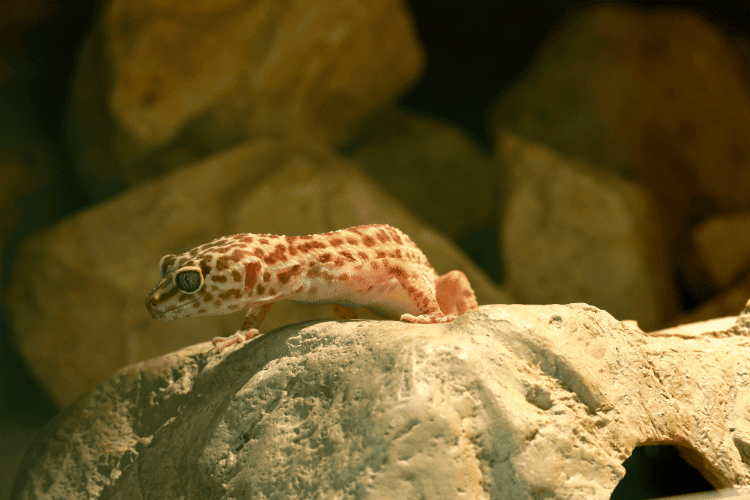
Using a reflector dome or dome fixture can effectively distribute the light and heat throughout the enclosure. Monitoring temperature is essential, and both infrared thermometers and regular thermometers can be employed for accurate readings.
Heat sources like heat mats and ceramic sockets are crucial in maintaining the correct temperature gradient within the enclosure.
Both daytime and nighttime temperatures, influenced by heat output and air temperature, should be carefully monitored to provide the right environment.
Type of Bulb
Consider using UBV or incandescent bulbs, as they emit both heat and visible light. This combination is essential for your gecko’s thermoregulation and natural behaviors.
- Incandescent Heat Bulb: For providing the necessary heat gradient, a 15 to 25-watt incandescent heat bulb is commonly recommended for a 20-gallon tank.
- UVB Bulb: If you’re considering a low-output UVB bulb, you would typically use a 5 to 10-watt bulb. Remember that leopard geckos don’t require as much UVB exposure as diurnal reptiles, so the wattage should be relatively low.
A combination of UV light bulbs and daytime bulbs can offer the necessary UVB exposure and simulate natural light cycles.
Halogen lamps are also popular choices for maintaining proper daytime temperatures.
Nighttime bulbs simulate natural night cycles, promoting the geckos’ natural behaviors. However, it’s important to avoid blue light during the night cycle to mimic their natural habitat.
To avoid health issues related to temperature and lighting, gecko enthusiasts should understand the type of light and the ideal temperatures that pet reptiles require.
Wrapping Up
While leopard geckos are primarily nocturnal and don’t require intense lighting like diurnal reptiles, providing suitable lighting is still crucial for their health and natural behaviors.
For a leopard gecko’s 20-gallon tank, an appropriate watt bulb for creating a basking spot and temperature gradient typically ranges from 15 to 25 watts.
If considering low-output UVB, a 5 to 10-watt bulb may be used. However, specific wattage can vary based on room temperature and the distance between the bulb and the basking area. Regular monitoring and adjustment are essential to maintain optimal conditions.

